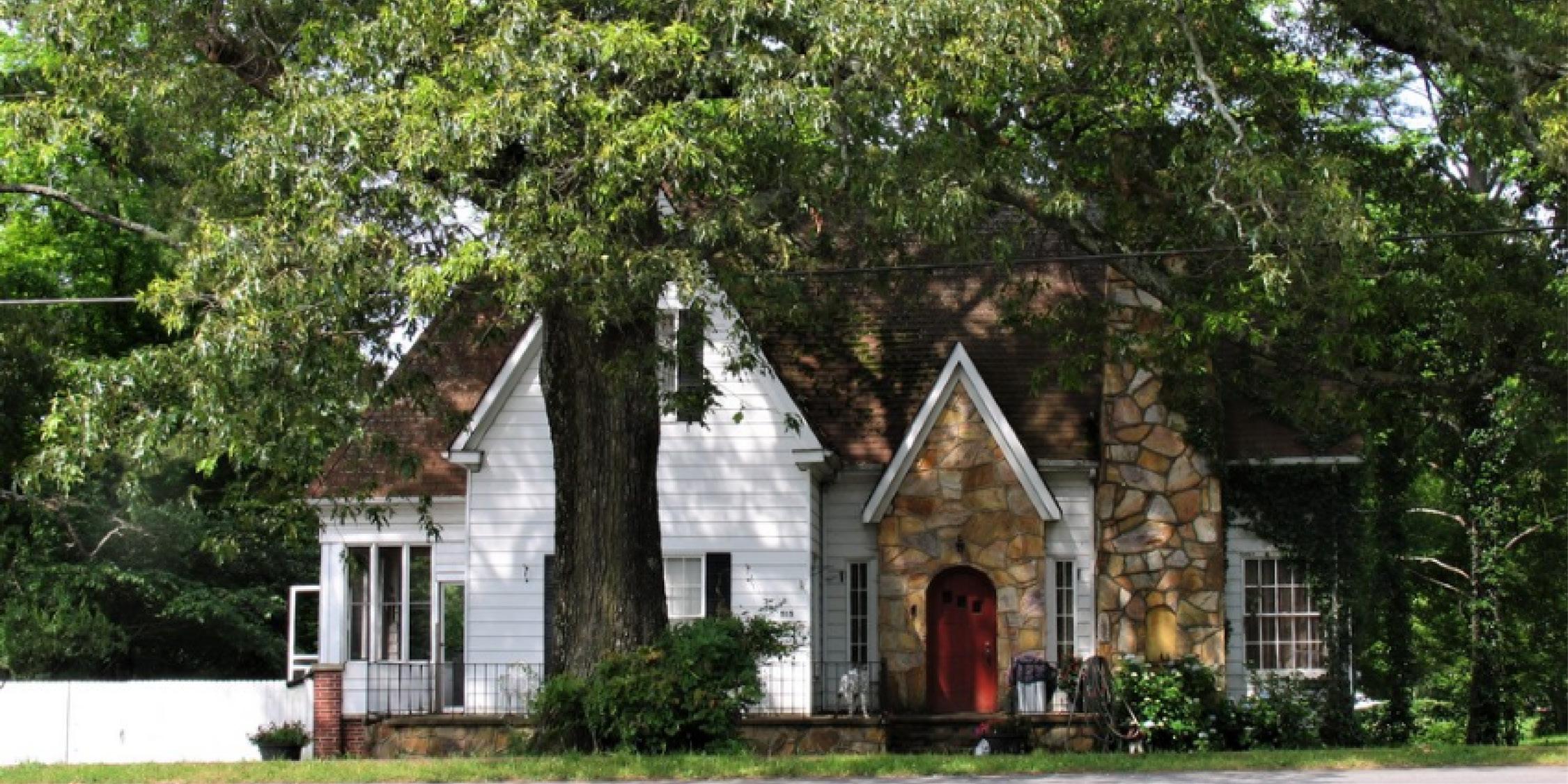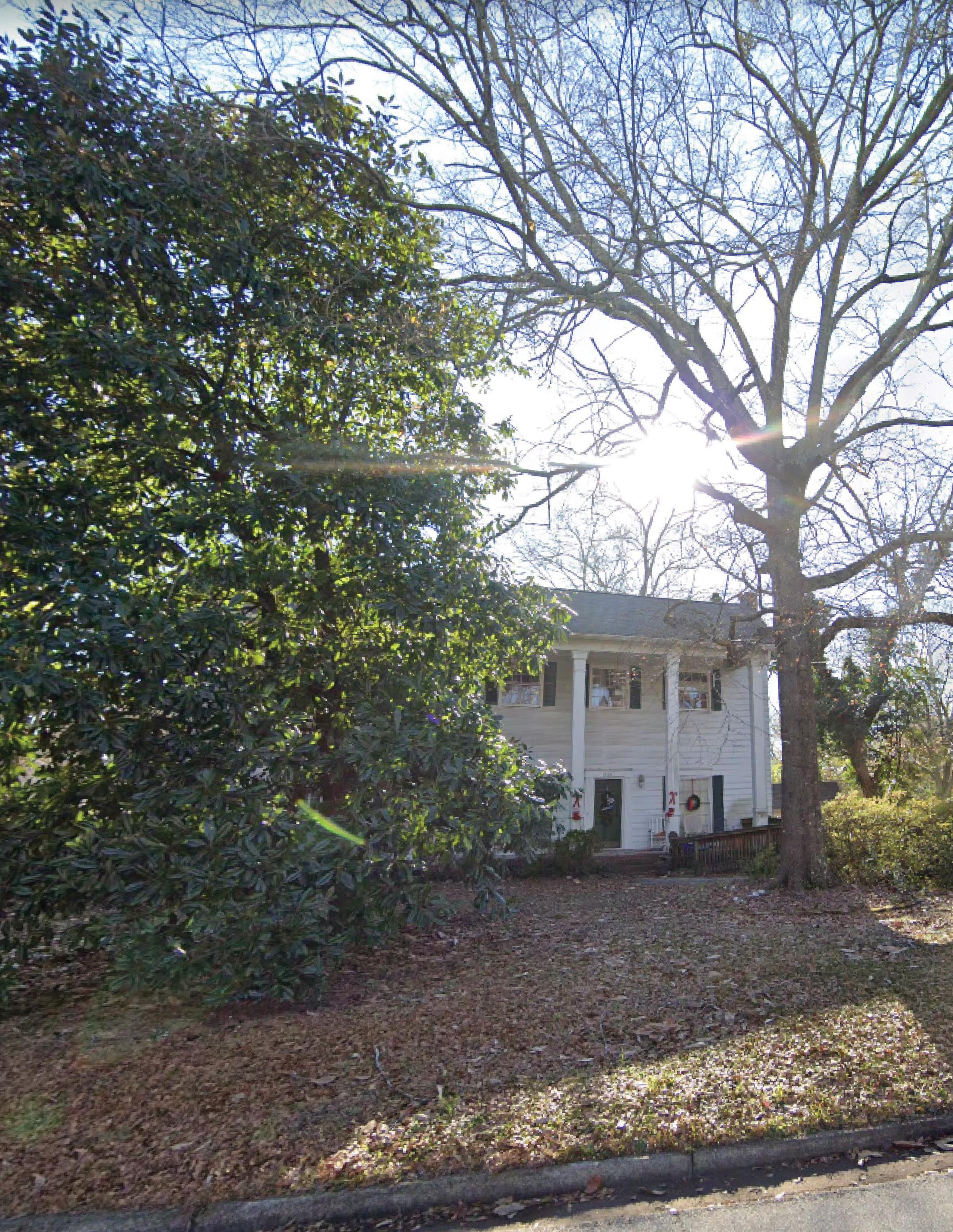
32 minute read
Douglasville Housing Recommendations
CHAPTER 3 Douglasville Housing Recommendations
Recommendation #1: Diversify Housing Stock
Encourage the production of new for-sale and quality rental housing that will broaden housing types available in Douglasville. Particularly, the City stands to benefit from increasing the range of housing types that are suitable for older adults who wish to age in place and housing for higher-income households.
When a City provides a wide variety of housing types, it creates space for the diversity of its residents – enabling people from a range of economic levels, household sizes, and age groups to fit comfortably into their community. Additionally, greater housing stock diversity in a community increases the stability of housing in an area by providing residents with housing better matched to their needs than what might be available in more homogeneous neighborhoods.
Douglasville will benefit from increasing the range of housing types available within City limits and matching housing options to the City’s changing demographics. Diversifying its housing stock will enable the City to better match the makeup of its residents to the available housing, prepare for the population to age in the community, and attract more high-income households. Through data analysis and stakeholder engagement, we found that Douglasville is currently experiencing a lack of the following housing types:
• ‘Missing Middle’ housing • Higher-cost, for-sale, single-family housing • New Multifamily housing • Senior housing
Douglasville has a significant household size (how many people live in a housing unit) to housing units size (how many bedrooms are in a housing unit) mismatch, illustrated in Figure 1. While every community can expect some degree of mismatch, it is important to note as an indicator for how a City’s housing options reflect the composition of its households. Different households will, of course, have different preferences about what type or size of home is right for them. Looking more closely at mismatch shows where certain options might be lacking for specific types of families.
In Douglasville, a housing-type to household size mismatch is one of the principal factors contributing to the City’s need for housing stock diversification.
Missing Middle
Figure 4: Housing Mismatch
1 2 3 4
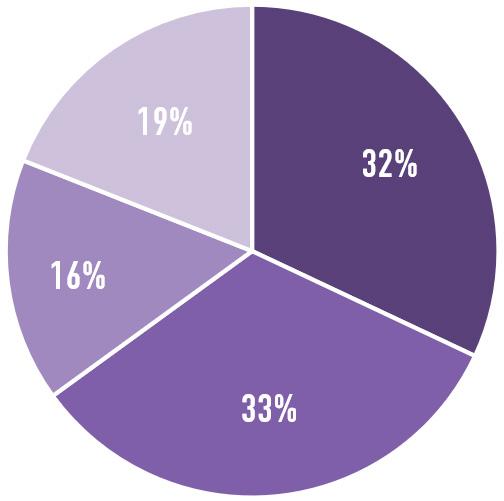
Household Size (People)
1 2 3 4
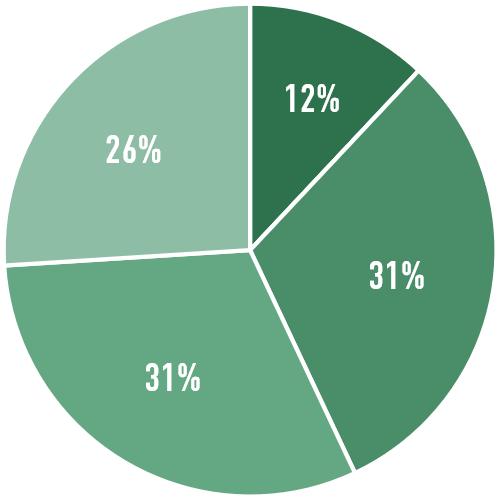
Number of Bedrooms
Source: Esri Business Analyst 2020
Figure 4 illustrates the substantial difference between the number of 1-person households (31% of all households) and the number of 1-bedroom housing units (12% of housing units). We do not intend to prescribe that every housing unit should have one bedroom for each person living in it, although we recognize that the difference in supply of 1-bedroom units and makeup of 1-person households is substantial enough to warrant attention. Framing this mismatch with raw numbers, we find that if every 1-person household in Douglasville wanted a 1-bedroom unit, the City would be short over 2,000 units (ACS, 2018).
It is also worth noting that 57% of the City’s housing stock has three or more bedrooms per unit, while only 38% of households have as many residents. So, that undersupply of single-bedroom units also registers as an apparent oversupply of units with three or more bedrooms, likely causing many Douglasville households – not just one-person households – to acquire and pay for “more house” than they need.
This mismatch can be addressed through the development of what is commonly referred to as missing middle housing. The Missing Middle Housing types provide diverse housing options, such as duplexes, fourplexes, cottage courts, and multiplexes. These house-scale buildings fit seamlessly into existing residential neighborhoods and support walkability, locally-serving retail, and businesses. They provide solutions along a spectrum of affordability to
Image 2: Missing middle housing address the mismatch between the available housing stock and shifting demographics while also addressing the growing demand for walkability. Downtown and surrounding areas should be used as the anchor and focal point for much of this housing type.
Development of missing middle housing types will require zoning amendments that will allow for the conversion of single-family units to duplex, triplex, and quadplex housing where appropriate throughout the City. Not only would this help right-size Douglasville’s housing stock for its changing demographics, but it may also contribute to increasing the affordability of market-rate housing within the City, without decreasing the value of extant housing stock.
New housing demand can be met by a variety of housing types and models, shown in Image 2:
Source: Missing Middle Housing

Undersupplied Demand for Luxury Housing
Douglasville’s housing stock also exhibits a shortage of larger, for-sale, luxury homes. Interviews initially revealed a perception among stakeholders that luxury housing in Douglasville is undersupplied, and data shows there exists potential demand – coming from current Douglasville residents and potential transplants – for higher cost housing. This undersupply of high-cost housing signifies both a current challenge and a potential opportunity for the City.
There is likely demand from existing Douglasville residents as well as from people Douglasville could attract to live within the City for more expensive housing, suitable for higher-income households. Our analysis of home values and household incomes in Douglasville finds that roughly 5.5% of the City’s housing is valued at $400,000 or more, according to the Census Bureau, while 8% of the City’s current households earn incomes for which a $400,000 home is appropriately priced (Table 2). So, there is a small but notable undersupply of high-end homes that could capture greater property taxes and improve the performance of the City’s overall residential market, boosting home values for middle-class families as well.
Additionally, the undersupply of luxury homes poses a challenge because, although Housing in Douglasville is relatively inexpensive when compared to home prices in the Atlanta region as a whole, undersupply of luxury housing may also contribute to the cascading effect
described earlier, in which high-income households occupy homes at lower costs than they usually might, placing an increased strain on the supply of housing affordable to middle- and lower-income households. Table 2 shows an estimated 2,275 households in Douglasville take home annual incomes of $100,000 or greater. Constituting about one quarter of the City’s households, these higher-income earners have a restricted stock of housing priced appropriately for their incomes to choose from – only about 17% of the City’s owner-occupied housing is valued at $300,000 or above. This suggests that high-income earners in the City may have to “buy down” the income ladder to acquire housing in Douglasville, which ultimately eats away at the low-cost housing stock appropriate for middle- and lower-income households.
Table 2: All Household Incomes Compared To Cost Of Owner-Occupied Housing
Table 3: Owner Households’ Income Compared to Cost of Owner Occupied Housing
Income
% of HH in Corresponding Income Bracket % AMI*
Home Price Ranges (Provided by KB Advisory) Home Price Ranges (Available through ACS)
% of OwnerOccupied Homes in Corresponding Price Bracket
Up to $34,999
$35,000 - $49,999
$50,000 - $74,999
$75,000 - $99,999
$100,000 - $149,999 31.2%
13.1%
18.8%
11.9%
16.8% Up to 50% Up to $110,000 Up to $100,000
50% - 70%
70% - 100%
100% - 150%
150% - 200% $110,000 - $150,000 $150,000 - $230,000 $230,000 - $310,000 $310,000 - $460,000 $100,000 - $150,000 $150,000 - $200,000 $200,000 - $300,000 $300,000 - $400,000 16.9%
21.2%
23.4%
21.8%
11.2%
$150,000 and Up 8.1% 200% and Up $460,000 and Up $400,000 and Up 5.5% *AMI for the Atlanta-Sandy Springs-Roswell MSA is estimated at $69,464, using U.S. Census Bureau’s American Community Survey Data
Source: ACS 2019, 5-yr data, S1901 and B25075; KB Advisory
Income
# of HH in Corresponding Income Bracket % AMI*
Home Price Ranges (Provided by KB Advisory) Home Price Ranges (Available through ACS)
% of OwnerOccupied Homes in Corresponding Price Bracket
Up to $34,999
$35,000 - $49,999
$50,000 - $74,999
$75,000 - $99,999
$100,000 - $149,999 1120
472
974
665
1412 Up to 50% Up to $110,000 Up to $100,000
50% - 70% $110,000 - $150,000 $100,000 - $150,000
70% - 100%
100% - 150%
150% - 200% $150,000 - $230,000 $230,000 - $310,000 $310,000 - $460,000 $150,000 - $200,000 $200,000 - $300,000 $300,000 - $400,000 928
1166
1288
1200
613
$150,000 and Up 853 200% and Up $460,000 and Up $400,000 and Up 301 *AMI for the Atlanta-Sandy Springs-Roswell MSA is estimated at $69,464, using U.S. Census Bureau’s American Community Survey Data
The City’s housing stock would also benefit from an increased supply of multifamily units, for both rent and ownership. In 2001 and 2002, Douglasville permitted the development of over 1,500 multifamily units, and just over another 300 units in 2008 – as a result, roughly one-third of the City’s housing stock is currently multifamily. However, after 2008, the City did not develop any multifamily housing, and no more units were permitted until the latter half of 2020 (SOCDS and City of Douglasville). Meanwhile, the City permitted over 1,100 single-family housing units between 2008 and 2020. In addition, due the multifamily housing stock’s age, it is likely to need repairs and maintenance. Also, it is likely not the type of rental to meet the needs of many Douglasville residents, from moderate income millennials and young professionals, to higher income individuals.
Considering Douglasville’s housing type to household size mismatch discussed above, the development of multifamily housing provides a straightforward means by which Douglasville can begin to right-size its housing stock for the needs of existing and prospective future households, from moderate income young professionals, to adults living alone, to seniors who wish to age in place without leaving their neighborhoods.
Figure 5. Housing Permits, 2001-2020 Housing Permits
2000 1800 1600 1400 1200 1000 800 600 400 200 0
2001 2002 2003 2004 2005 2006 2007 2008 2009 2010 2011 2012 2013 2014 2015 2016 2017 2018 2019 2020
Single Family Missing Middle (2-4 Units) Multifamily (5+ Units)
Source: SOCDS Building Permits Database
Need for Senior Housing
Like countless other communities throughout the state and the country, Douglasville is home to an aging population, whose housing needs will evolve over the next couple decades as older adults become a larger part of our population. While about 10% of Douglasville’s population was aged 65+ in 2019, another 18% of the current population was between 50-64 years and will join the 65+ cohort in the next 15 years. To accommodate a growing older population, Douglasville will need to ensure that there are a diversity of accessible and affordable housing options for older residents to age within the community. Some long-term residents may wish to downsize while others may need assistance with modifying their current home or accessing services to stay within their community. The City is actively permitting the development of senior housing to meet some of this need, with 170 new units in early stages of development and another 308 units in varying stages of zoning review.
1.Promote a mixed-use and mixed-income downtown and surrounding area that facilitates the ability to live, work and play in the area.
a.Conduct a parcel level survey of available buildings or land within downtown that are candidates for redevelopment, historic preservation or mixed-use.
i. Create and update searchable inventories of sites available for residential development
b.Introduce mixed-use and more urban residential formats that require rezoning.
i. Create a new High Density Residential zoning district to allow combination of different types of multi-family and small, single-family residential land uses where appropriate, either by right or with restrictions. Including Duplex, Townhouse
Condominium, and Multi-Family Residential. ii. Reduce square footage, lot width, lot size, building setback, street width, and off-street parking requirements where appropriate. iii. Remove Industrial zoning near Downtown that could lead to the development of uses out of line with goals, especially on undeveloped parcels. iv. Tie multifamily density bonuses to the provision of bottom-floor retail in mixed-use development; and linking residential density with retail. v. Residential in Commercial districts
c. Implement recommendations above in the newly funded ARC Livable Communities study, including mixed-use and mixed-income goals
i. Analyze zoning changes needed to accomplish housing goals, ie. Developing housing over retail ii. Identify catalytic properties for redevelopment iii. Renovate historic buildings for both housing and retail iv. Evaluate and Incorporate designated lowerincome housing units v. Develop examples of capital stacks for lowerincome housing
2.Evaluate and develop specific zoning code changes to accomplish housing goals throughout the City.
a.Evaluate existing zoning and land use by specifically evaluating the ability to increase housing options, type and size, in City of Douglasville. b.Update Douglasville’s Unified Development Ordinance to introduce changes to zoning and expansion of category characteristics identified in a number of past plans to address housing goals. i. Allow appropriate density development by-right within distinct character areas, corridors, & centers ii. Adopt design guidelines and implement regulatory controls by area, zoning districts, or overlays, speaking to specific development characteristics such as site planning, massing, scale, and density. iii. Rezone in accordance with the “Community
Character Areas” iv. Require high-quality architectural design and construction for all new public buildings, institutional buildings, and residential and nonresidential private developments, reflecting
Douglasville’s unique community image and character.
c. Zoning should be used to provide housing choice and increase missing middle options by reducing setbacks, minimum square footage requirements, and allowable housing types.
i. Change zoning code to allow property owners in targeted areas to build or renovate duplexes, triplexes, townhomes, and garden style apartments that blend into the character of the neighborhood. ii. Allowing higher density, smaller lots or multi-unit buildings in the Medium Density Residential and
High Density Residential zoning districts. iii. Designate transitional areas to accommodate and incorporate medium density and mixed housing types. iv. Establish an “anti-monotony” code for major subdivisions, promoting diversity among housing products, densities, and site development characteristics. v. Relax accessory dwelling unit requirements and expand other types of residential land uses (e.g., duplexes and townhomes) either by-right, with restrictions, or requiring Special Use approval in other residential and commercial zoning districts.
3.Use Historic preservation strategies to develop additional housing while also preserving character of
Douglasville
a.Create a detailed catalog of historical assets that could include housing, commercial, and general landmark designations, specifically in downtown and northside neighborhood. b.Promote adaptive reuse of large, older industrial or commercial buildings for housing by proactively rezoning to a multi-family residential zoning dist.
This could provide needed housing density and preserve the architectural heritage of a community.
In recent years, Newton County and its cities have witnessed the transformative potential that comes from investment in varied types of housing. Over the past few decades, county and City leaders—especially in the central cities of Covington and Porterdale—have thought “outside the box” of traditional housing development, encouraging the creation of mixedincome neighborhoods, small-scale infill, and retrofits of historic buildings.
The City of Covington, in particular, has been at the forefront of housing innovation in Newton County. The most prominent example is the mixed-use, mixed-type neighborhood of Clark’s Grove, Phase 2 of which is currently being built out now (May 2021). The neighborhood features a collection of single-family homes—built on small lots or in cottage courts—as well as townhomes and apartments, all of which share Covington’s classic Southern aesthetic.
In addition, the neighborhood includes a modest amount of retail space as well as a community center and pool. When Phase 2 is built out, it will link the neighborhood directly to the Cricket Frog Trail, a recently-completed rails-to-trails project that threads through Covington’s downtown and near the City’s main commercial corridor.
Other small-scale infill projects have been proposed for Covington as well, including converting some of its manor homes into subdivided units, or adding apartments a few short blocks away from its central Square.
Beyond Covington, Porterdale has engaged in transformative retrofit projects. Its historic mill, which sits alongside the Yellow River, has been converted into high-end lofts. Breathing new life into these historic buildings has only reinforced Porterdale’s milltown charm, adding new housing around its smallfootprint single-family and historic duplexes.
Through the creation of these new homes, local leaders have positioned housing as an economic asset, not just for each individual household but for the entire community. Locating housing near services, or creating additional retail space as part of a housing project, encourages neighborhood vibrancy and walkability. Adding units of different types and sizes not only supports families with a range of incomes and preferences, but also increases the cities’ tax value per acre that can then be reinvested in other improvement projects. Newton’s success comes from a mix of factors. First and foremost, local leaders have championed these ideas, reaching out to community members, business leaders, and developers to discuss the benefits of these housing innovations. Notably, the Covington Housing Authority is a major partner in advancing housing choice, as they used their unique suite of powers to acquire land and construct housing that meets their community’s needs. And those needs are great: the vast majority of CHA’s residents have fulltime jobs, but still have trouble finding quality homes that fit within their budget.
Secondly, City and county planning staff have invested time and attention in creating flexible land use and zoning regulations that encourage these housing types. Though the process can be slow, the resulting opportunities can set up communities for sustainable success in the long-term.
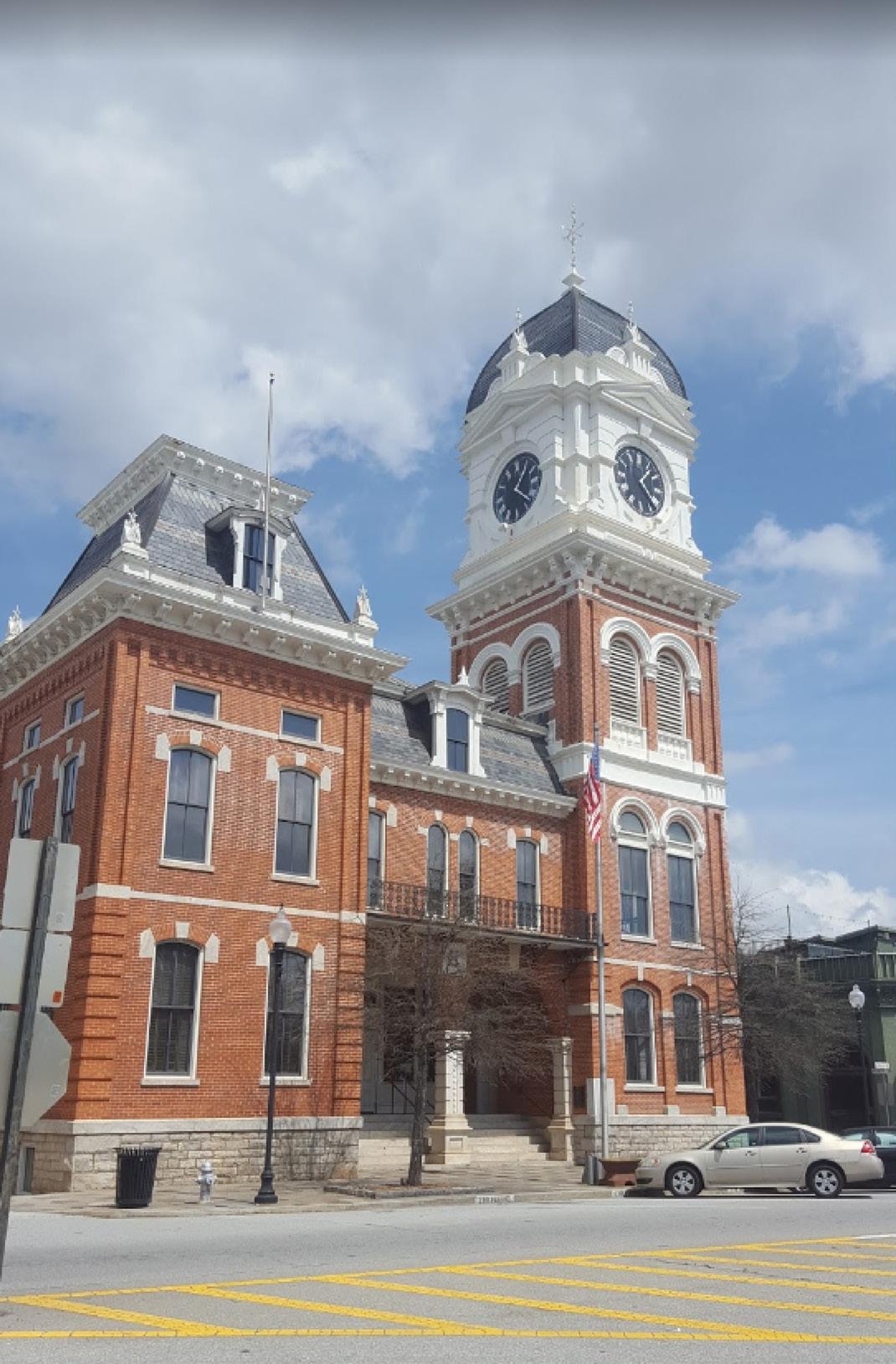
Recommendation #2: Promote Neighborhood & Housing Stability
Douglasville needs to protect the City’s most vulnerable residents by increasing access to ownership & protecting renters.
Neighborhood stability is used here to refer to those physical, economic or social features of the neighborhood that are associated with the quality and investment within the community. Housing factors that measure stability are: the quality of homes, the rate of homeownership & cost-burden, property abandonment, and residents’ risk of loss of housing through eviction or foreclosure.
Addressing issues of neighborhood and housing stabilization will have a positive effect on Douglasville’s economic success as a City and families’ quality of life. Specifically, the neighborhoods in greatest need of stabilization are those surrounding downtown. Turning attention to these neighborhoods can help downtown realize the full potential of its economic investments.
The Atlanta Regional Commission’s Metro Atlanta Housing Strategy, identifies four housing submarkets in Douglasville, the largest of which (Submarket 7; see Map 1) is host to neighborhoods at noteworthy risk of potential decline and loss of homeownership.
Map 1: Douglasville Regional Submarkets
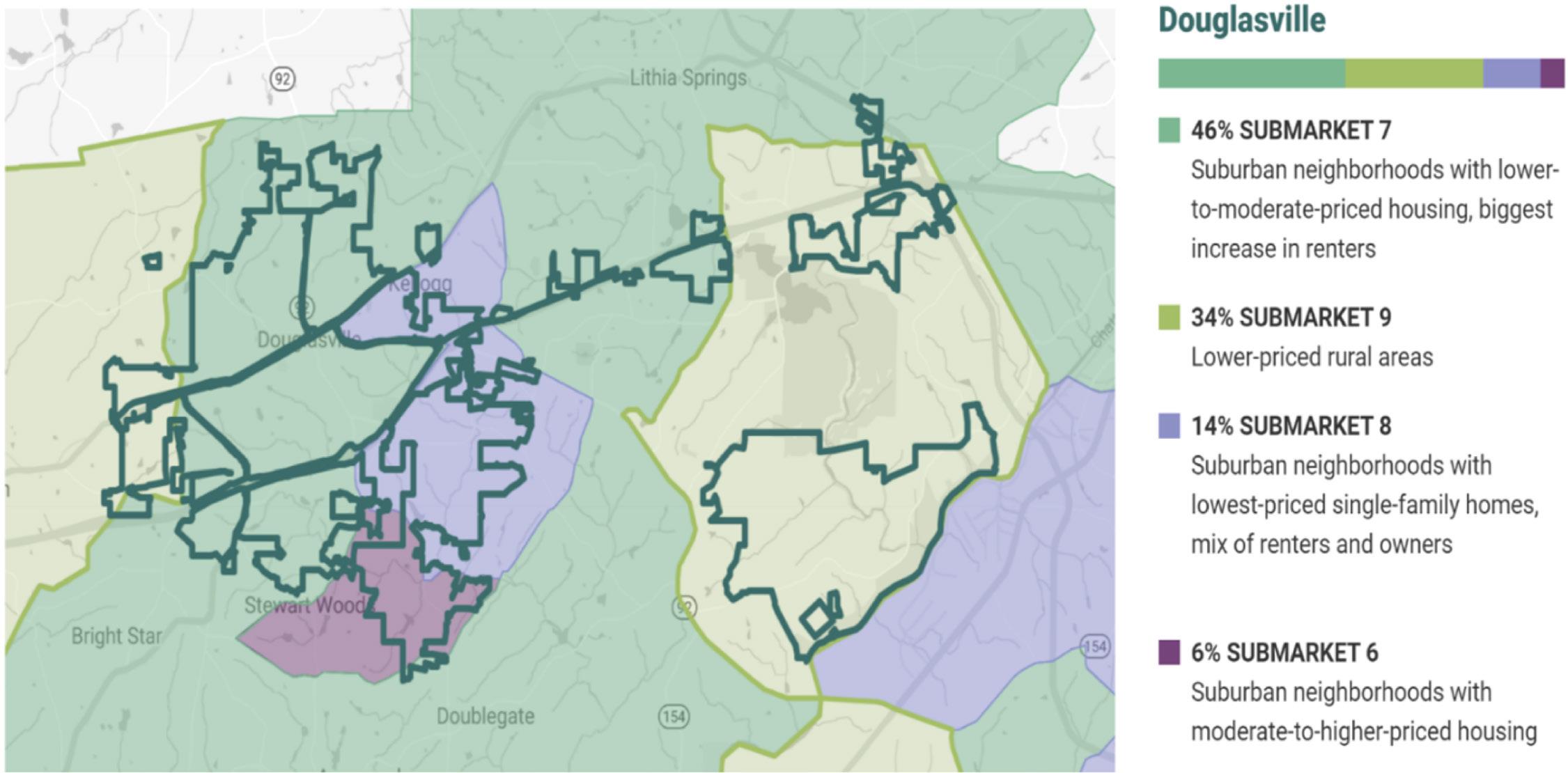
Source: metroatlhousing.org
More specifically, factors discussed in this report pertaining to neighborhood and household stability points to: • High rates of housing cost-burden among households earning below the City’s median income • Declining homeownership rates • Ability to continue to meet housing demand In addition, COVID-19 pandemic introduces a heightened risk of instability and ultimately eviction for renter households. Economic fallout from the ongoing pandemic will disproportionately impact housing stability for lower- and middle-income households, especially those employed in service industries. Given the City’s high proportion of renter and cost-burdened households, this is crucial to monitor and address.
Throughout the past few decades, across the entire country – Douglasville included – the cost of housing has risen at a rate outpacing growth in wages, rendering housing “less affordable” to people everywhere. Douglasville’s median income is $53,276, and although household income has continued to increase over time, it has not been enough to keep up with inflation or the sky rocketing cost of housing in the region.
Housing affordability is frequently discussed in terms of whether a household experiences “cost burden.” Housing cost burden occurs when a household pays more than 30% of its income toward the cost of keeping a roof over their head every month. When low- and moderate-income households are cost-burdened, they may struggle to afford necessities, like food, clothing, transportation, and medical care.
Predictably, lower-income and renting households are cost burdened at a higher rate than homeowners. Figure 6 shows the rate of cost-burden for Douglasville households, broken down by tenure and income. For households earning below the City’s median income (roughly $53,000 in 2018), cost burden is very common. Roughly one-third of the City’s residents earn less than $35,000 annually, of whom nearly nine in ten (87%) are burdened by the cost of their housing. Furthermore, over 50% of renters earning between $35,000 and the City’s median income also experience cost burden.
Older adults (65 and older) and young people (15-24) face housing cost burden at the highest rates in Douglasville, with renters experiencing cost burden at higher rates in both cohorts. Renters 65 and older are cost burdened at a rate of 62%, while renters aged 1524 are cost burdened at a rate of 57%. Conversely, older homeowners face cost burden at lower rates than their younger counterparts: homeowning older adults face cost burden at a lower rate (26%) than do homeowners aged 25-34 (42%), likely as a result of older homeowners frequently having paid off mortgages.
Figure 6: Cost Burden
Source: ACS B25106, 5-yr data, 2018
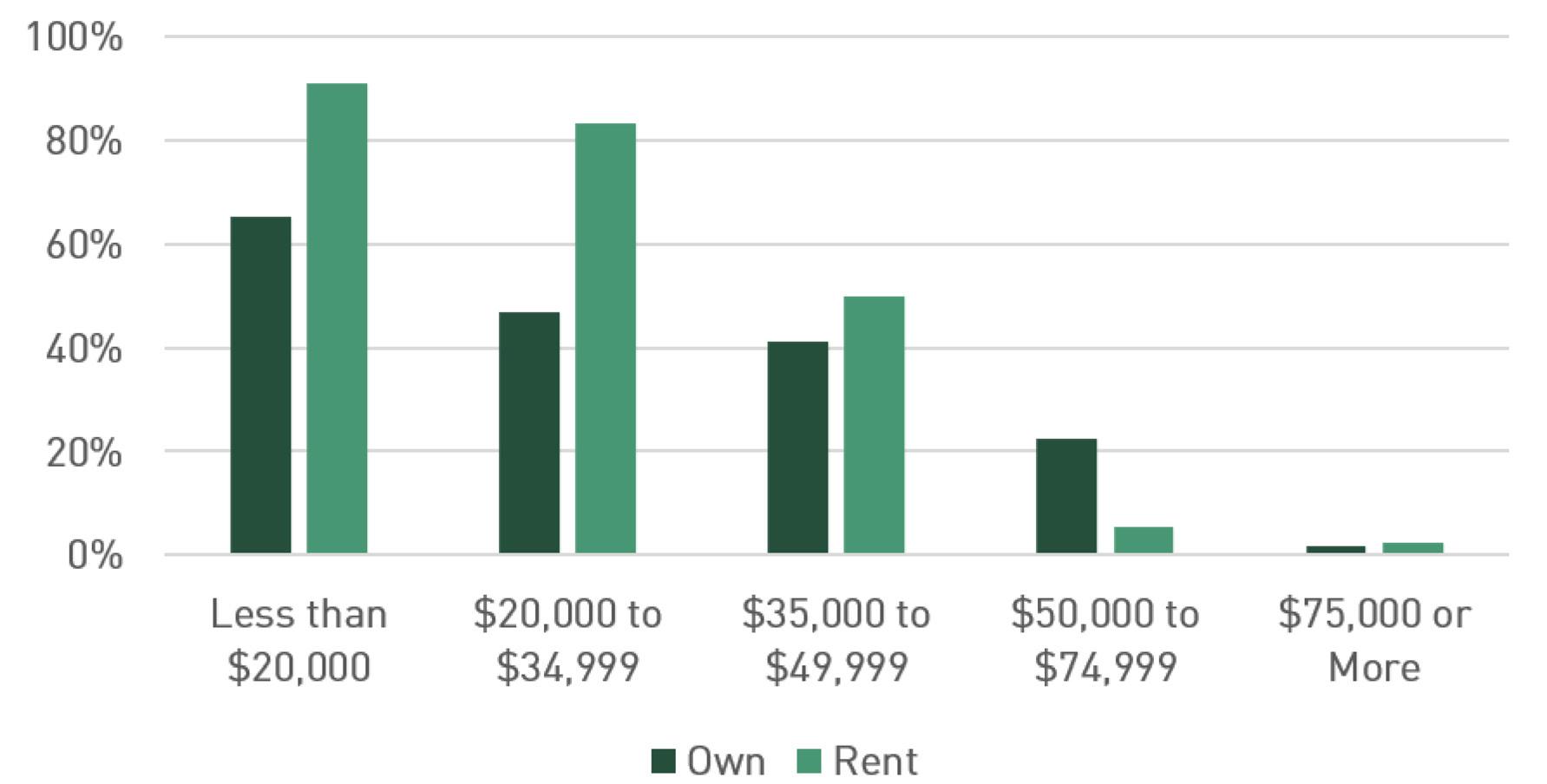
Figure 6 also illustrates that housing in Douglasville is very affordable to residents earning more than $75,000 per year, making it a great place for middle-class families to accrue wealth through homeownership, but it is clearly not affordable for households earning below $35,000. The City can focus on stabilizing rents and introducing creative solutions to make housing more affordable to low- and moderate-income households without introducing the potential negative impacts on owners’ investments.
Rate of homeownership is an important marker of housing and neighborhood stability. Not only is home ownership one of the best ways to build long-term wealth, but it also fosters a sense of community and stability vital to growing families and communities.
In Douglasville, between 2010 and 2018, the rate of homeownership dropped from 53% to 43%, marking a swing from majority ownership to rentership. Table 4 outlines how tenure changed, and specifically highlighting that change within single family homes. Between 2010 and 2018, while the City’s housing stock grew by nearly 1,000 units, the stock of owneroccupied housing actually decreased by nearly 700 units, almost all of which were single-family homes that had converted to renter occupancy.
The Metro Atlanta Housing strategy data illustrates where the change in ownership took place, helping to point to the more vulnerable neighborhoods with losses in orange on Map 2.
Table 4: Tenure by Units in Structure
Total
Owner-Occupied Housing Units
Single-Family Unit
Renter-Occupied Housing Units
Single-Family Unit
Source: ACS 2019, 5-yr data, B25032
Map 2: Change in Ownership
2010
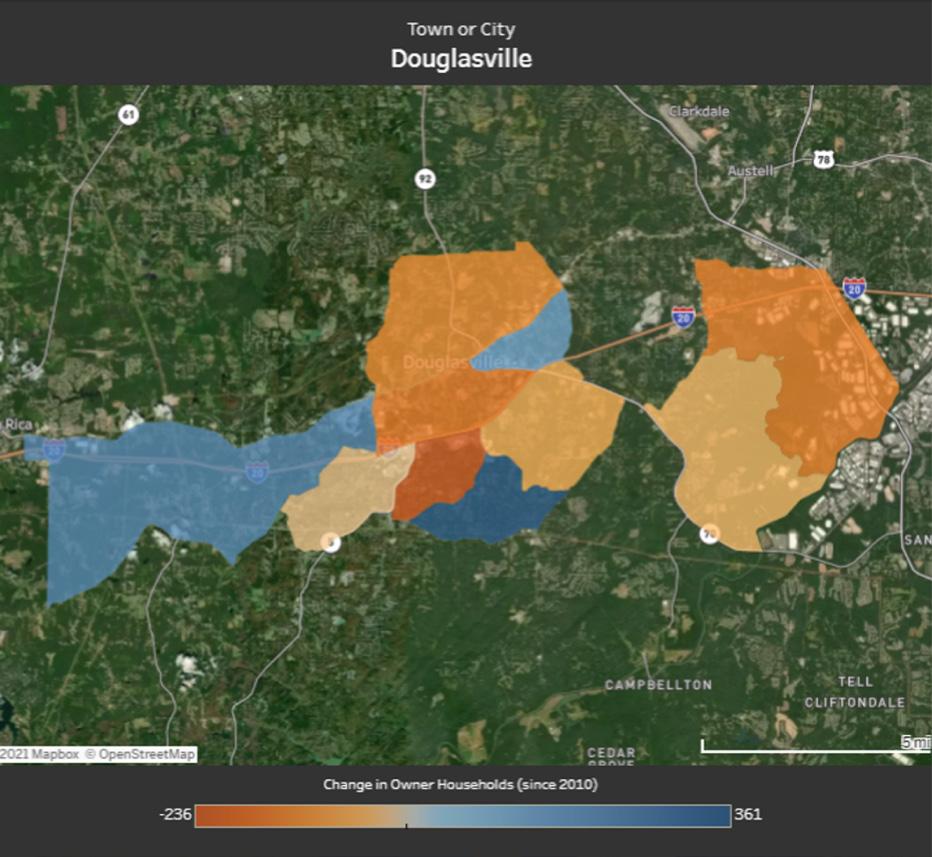
11,134
5,954
5,655
5,180
1,075
2019
12,675
5,496
5,206
7,179
1,595
Change, 2010-2019
1,541
-458
-449
1,999
520
This information is not to imply that rental housing isn’t a vital part of any community, particularly those with large numbers of lower-income families for whom homeownership may not be a realistic or desirable alternative. While maintaining homeownership is desirable to neighborhood and family stability, policies should focus on both homeowners and a sound rental housing stock, engaging renters fully in these housing conversation.
To identify individual properties in poor or unsafe conditions within neighborhoods experiencing loss of homeownership, the City can replicate the methodology employed in the 2018 Northside Study (pages 30-31).
The City can boost homeownership rates – and, by extension, housing stability – through two key approaches: it can create financial and educational resources to increase access to homeownership opportunities, and it can use programs to keep existing homeowners in their homes.
A key to preventing housing costs skyrocketing as Douglasville grows is the need to meet future housing demand by continuing to develop enough housing. For Douglasville to meet its forecasted housing demand, it needs to add roughly 140 new units per year between 2021 and 2025 (700 total).
The demand model’s outputs are broken down in Table 5.1 Demand modeling suggests two-thirds of new housing units demanded will be owner occupied (95 per year, or 475 over five years), with about ten percent of that demand being for multifamily units.
By satisfying the community’s total demand for housing, Douglasville will keep quality, affordable homes in reach for middle class families. However, in order to satisfy the more specific needs related to households’ varied incomes & preferences related to type, Douglasville must invest in a variety of housing options.
Table 5. New Demand By Tenure and Type
Annual
Total
New Rental Units 140
45
New Owner Detached 79
New Owner Attached 16
5-Year Target
700
225
395
80
Source: KB Advisory and ARC
To improve neighborhood stability and prepare for future growth, Douglasville should pursue solutions that alleviate housing cost burden for low-income residents and improve access to homeownership and quality housing. Meanwhile, the City should ensure it continues to permit new housing at a rate that keeps up with population growth.
1.Improve the quality of the City’s existing housing supply, including older homes and income-restricted properties a. Create preservation catalogs. An important first step is to identify which units to preserve, and if applies include the types of subsidies and rent restrictions that apply to each development and find out when those subsidies are going to expire b. Prioritize properties. Once all of the candidate properties for preservation have been identified, communities can begin reaching out to owners to learn about their intentions, and about the physical and capital needs of their respective properties, as well as the timing of the expiration of any housing subsidies. This research can help prioritize limited preservation resources on the properties that are most important to preserve with regards to location and quality. i. Use the recently funded LCI study to determine the economic impact housing stability will have on downtown and help to prioritize properties for redevelopment, identifying catalytic sites. c. Develop a package of financial supports available to preserve, including: i. Community HOME Investment Program (CHIP) ii. Community Development Block Grant (CDBG) iii. Low Income Housing Tax Credit (LIHTC) program iv.Tax-exempt multifamily bonds or 501(c)(3) bonds d. Consider opportunities to partner with and support the activities of respective Public Housing Authorities in pursing programs to renovate existing public housing stock as well as support and potentially incentivize landlords who accept housing choice vouchers.
e. Code enforcement strategies should emphasize proactive solutions rather than reactive solutions, helping to ensure problems are unlikely to arise. i. Hold repeat offenders accountable by enforcing harsher penalties on multiple violations, especially landlords with large holdings. ii. Place special focus on offenses that affect safety and health - like mold, leaks, and structural deficiencies. iii. Increase funding to support code enforcement action and demolition of blighted vacant buildings. iv.Establish a three year goal to reduce non-compliant parcels by a certain percentage based on funding. v. Require boarding of vacant structures. 2.Create both a community Land Bank & Land Trust to work in partnership to facilitate the redevelopment of underutilized, vacant blighted, tax delinquent properties a. A Land Bank is a governmental entity that acquires vacant, abandoned, or tax-delinquent properties and ultimately converts “liabilities into productive assets” b. A community land trust is a nonprofit organization that acquires, retains, and manages scattered parcels of land on behalf of the community with the intention of never reselling properties. i. A land trust can renovate and rent or sell a house to new lower-income households while retaining ownership of the land and granting the right to occupy the site through a ground lease. ii. While the goal of a land trust is to have “people build equity from day one and have an ownership stake,” there are restrictions placed on the resale value of the home. iii. Coordination between the land banks and land trusts can lower land acquisition costs for rehab homes and lessen the bureaucratic, legal, and market timing challenges. 3.Direct financial and educational resources to owners and renters to increase ownership and stabilize households and neighborhoods a. Creation of a Homeowner Rehab program i. Provide financial assistance for emergency repairs, code violations, anticipation of code violations, and exterior repairs guided by design standards to promote safety. b. Creation of Rental Rehab program i. Provide rehabilitation grants or low-interest loans to land loads, in addition this could be made on the condition that these units be rented to families with incomes less than 60% of the area median income (AMI). c. Provide training programs and financing tools such as down payment and closing cost assistance to increase access to homeownership i. Create a range of resources for households experiencing a housing crisis (unanticipated change in housing costs, eviction, etc.)
Take a walk around Brunswick and its coastal character is immediately evident. From the vivid storefronts and breezy patios of Newcastle St to the ornate manors of its historic district, it is clear that Brunswick celebrates its history. But in order to maintain that history, Brunswick leaders needed to invest significant time and energy into stabilizing and reinvesting in their community.
Brunswick has experimented with several different methods of neighborhood stabilization that, when implemented together, have served to incrementally strengthen the City.
Local leaders responsible for downtown’s health and vitality have taken advantage of grant opportunities, historic preservation, and creative designs that transform existing buildings into modern spaces while keeping their historic character. The retrofit of the iconic Kress & Co building is one such example of what can be achieved when passionate citizens come together with a unified vision. When finished, it will host new loft-style apartments with ground-floor retail right in the heart of downtown.
Change agents in Brunswick also focused their attention on existing homes by helping homeowners improve their facades. Additionally, certain larger properties were transformed into multi-unit structures that provided new units at affordable rates.
New construction also came to Brunswick, in the form of small, shotgun single-family homes. Though builders kept the floor plans uniform, they adjusted the styles of the homes in response to the market. In Brunswick’s manor district, each shotgun house was adorned with Brunswick’s signature architectural embellishments; in other neighborhoods, builders kept costs low by simplifying the facades. Inside, each home featured the same quality designs and materials. Simply changing the “look” of each home offered affordable options to those who needed them.
Nearby, Norwich St—a neglected commercial corridor, home to vacant properties and safety concerns—faced different challenges. An overabundance of retail and asphalt had made it an eyesore that was tricky to rehabilitate. Still, local leaders got together and reimagined what the corridor could look like. Plans have focused on creative placemaking, highlighting new kinds of incubator-style retail and streetscape improvements. Some designs even proposed redeveloping abandoned garages and strip malls into picturesque, small-footprint housing units that would be affordable to lower- to middle-income households.

In addition to solutions that focused on design innovations and funding support, the City of Brunswick also partnered with Glynn County to form a Land Bank Authority. Through this governing body, the City can absorb dilapidated properties for redevelopment, furthering the economic revitalization the City has already experienced. As a community with such an extensive history, Brunswick had several properties they wished to preserve. These special structures proved to be just as instrumental as other, non-historical structures would at stabilizing the well-being of various Brunswick neighborhoods. In many cases, City leaders prioritized redevelopment over demolition, making lemonade out of the lemons that they had.
Recommendation #3: Encourage Leadership & Communication Around Housing Need
Dedicated housing leadership and communication tactics can move housing strategies forward and help a community to understand how housing issues impact community success and intersects with almost every other social issue and community outcome, from education and health to employment and public safety.
There is a general difficulty among the public to see housing as an issue that requires greater attention from policymakers. People often struggle to see the connection between housing, quality communities, and economic success, but public support is necessary to enact policies and establish programs that address housing. This requires employing communications strategies to expand the public discourse on housing needs within the community.
In addition, local government staff, elected officials, and service providers need to provide strong leadership, commitment, and collaboration to improve housing options through meaningful housing policy and finance changes.
Douglasville City government and elected officials will play a pivotal role in helping to develop new housing and stabilize existing communities by strengthening and improving how housing initiatives are carried out. The City, aided by public input, sets local development priorities and allocates public funds to housing and other community development initiatives. A number of the action items proposed in Recommendations #1 and #2 will need leadership of the local government to implement. Several of the recommendations raised in #1 and #2 need further analysis, consideration, and prioritization. For that reason, we suggest immediate these next steps lead by the local government: 1.Identify local government staff person who will lead housing work & their specific responsibilities. 2.Create a cross sector group, similar to that created for Georgia Initiative for Community Housing (GICH) program, led by local government staff to steward, oversee and implement the recommendations in this report. 3.Expand guiding principles to develop an intentional housing vision and specific accountable goals that will be used to guide an housing implementation plan. 4.Develop an implementation plan that identifies and prioritizes action items, lead partners and implementation time frame.
Leadership and Communication will be key to moving Douglasville housing initiatives forward. 1.The local government needs to take a more active role in identification and development of housing. a.Increase capacity of local government staff dedicated to housing issues b.Conduct and audit to Identify opportunities for residential development through the identification of surplus or vacant land and buildings, or underutilized properties. i. Create and maintain an inventory of available opportunities with key attributes of available parcels and desired development, making it easier to quickly identify sites that might be good candidates for housing. ii.Identify catalytic sites for mixed use, prepare site for development through demolition, rezoning and master planning and infrastructure improvements c. Empower an agency, possible development of a local development authority, to explore the possibility of providing incentives for residential development. This could include: i. Preparing development sites through site clearance, assemblage, or sub-division. ii.Subsidizing infrastructure development, either preemptively or in cooperation with a developer, in locations that are:
1.Likely to provide a wider-array of housing types 2.Deemed appropriate by local leadership. iii. Creating leasehold (“bonds-for-title”) agreements with landowners to lower tax and infrastructure burdens to provide time for construction of new developments to take place. iv. Offer surplus or underutilized public property at a discounted price or with access to low-cost financing. d.Assistance of local government for housing development can be focused on helping to provide
“proof-of-concept” for innovative development, for example residential on top of retail downtown. e.Seek to create a Public-Private-Philanthropic financial partnership to increase housing production. i. Leverage the public sector ability to borrow lowinterest money, possibly in partnership with a
Local Development Authority. f. Create a streamlined zoning and approval process for development of by-right multifamily development with amenities g.Use Local Government financing tools i. Community Development Block Grant (CDBG) 1.CDBG can be used for pre-development, site acquisition, site improvements, property acquisition, property rehabilitation, and firsttime home-buyer assistance. 2.CDBG funds can also be used for other purposes, such as the construction of public facilities, public services, and economic development activities. 3.At least 70% of CDBG funds must be used for the benefit of low-and moderate-income households.
2.Expand Community understanding of housing issues.
It important we find ways to talk about housing in a way that helps people understand shared community goals and illustrate how housing impacts everybody in a community. a.Make it easier for developers and the public to understand zoning rules and housing policies b.Develop educational materials that address frequently asked questions about housing in Douglasville c. Develop educational materials that improve public understanding of available housing options in Douglasville d.Use data to increase public understanding of how new development will affect town and school property taxes and services e.Encourage participation in community conversations around housing from groups that are less well represented, such as low-income families and renters generally
Just a short drive away from Douglasville, neighbor Paulding County knows first-hand the value of planning education.
In the mid-2010s, Paulding County correctly identified that they needed to reassess how they were growing. Like their peer counties on the urban fringe around metro Atlanta, their growth rate was climbing. To accommodate new residents, housing influencers in the county built more and more homes. However, rather than locating these new homes close to existing services (near commercial areas or the downtowns of Dallas and Hiram, Paulding County’s two biggest cities), new suburban-style single-family neighborhoods were being surveyed and built farther away, using up more of Paulding County’s land.
Though these types of units were in high demand, County officials began to suspect they needed to approach development more proactively by advocating for kinds of development they wanted to see and where they wanted those developments to be built. They began a process to redo their Comprehensive Plan, which included an in-depth Land Use Study led by the Georgia Conservancy.
During this process, it became clear through multiple engagement efforts that the City’s infrastructure could not support the continuous expansion of low-density development taking place. Eventually, the return on investment would be so low that it would cause undue stress on the county’s budget. This concerned practitioners and citizens alike, and gave planning staff in the county and its cities the necessary momentum to move forward.
Since then, the County has put significant energy toward educating the populace on different ways to build housing, use land, and encourage economic development. The County has positioned its new Wellness District as a catalytic development that will serve as an anchor for new housing, retail, and jobs. The cities of Dallas and Hiram have similarly looked inward to identify how they can reinvigorate their downtowns. Dallas, in particular, has examined its existing building stock for opportunities to add new housing units at scale with its need.
In summary, Paulding County is an example of a jurisdiction that charted its course, saw they were headed down a financially challenging path—a path lined with unsustainable costs for community services and infrastructure—and course-corrected. And they couldn’t have done it without the support and understanding of multiple stakeholders, including partners, practitioners, and the public.
